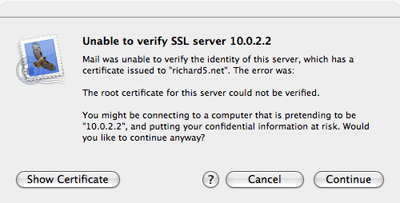
I have been setting up a new mail server recently with Postfix and SMTP Auth, and got the error message “no SASL authentication mechanisms”.
If you have enabled SMTP Auth with Postfix like this:
smtpd_sasl_auth_enable = yes
smtpd_sasl_security_options = noanonymous
smtpd_sasl_local_domain = $myhostname
broken_sasl_auth_clients = yes
smtpd_recipient_restrictions =
permit_sasl_authenticated,
permit_mynetworks,
reject_unauth_destinationand are getting messages like this (the extract below is from the mail log file):
Nov 2 15:31:09 vps131 postfix/smtpd[14007]: warning: dict_nis_init: NIS domain name not set - NIS lookups disabled Nov 2 15:31:09 vps131 postfix/smtpd[14007]: warning: xsasl_cyrus_server_get_mechanism_list: no applicable SASL mechanisms Nov 2 15:31:09 vps131 postfix/smtpd[14007]: fatal: no SASL authentication mechanisms Nov 2 15:31:10 vps131 postfix/master[12004]: warning: process /usr/libexec/postfix/smtpd pid 14007 exit status 1 Nov 2 15:31:10 vps131 postfix/master[12004]: warning: /usr/libexec/postfix/smtpd: bad command startup -- throttling
then you need to install the cyrus-sasl-plain package like so:
yum install cyrus-sasl-plain
The above method will install the cyrus-sasl-plain packages on CentOS and other RPM/Yum based Linux distributions, so you would need to use the appropriate package manager (and software package) for other Linux distros.
- Also make sure the SASAUTHD is running on your system
# systemctl status saslauthd
# systemctl start saslauthd
# systemctl enable saslauthd
NOTES :
# SASL CONFIGURATION
smtpd_sasl_auth_enable = yes
smtpd_sasl_security_options = noanonymous
smtpd_sasl_local_domain = $myhostname
broken_sasl_auth_clients = yes
smtpd_recipient_restrictions = permit_mynetworks permit_inet_interfaces permit_sasl_authenticated
#
You may verified your email server security score here:
http://www.emailsecuritygrader.com

Here is a part of my /etc/postfix/main.cf
# Sender restrictions
smtpd_sender_restrictions =
permit_mynetworks,
reject_non_fqdn_sender,
reject_unknown_sender_domain,
permit
#
reject_rbl_client zen.spamhaus.org,
reject_rbl_client bl.spamcop.net,
check_policy_service unix:postgrey/socket,
permit
# Postfix AntiSpam Configuration
disable_vrfy_command = yes
smtpd_helo_required = yes
smtpd_helo_restrictions = permit_mynetworks,
reject_non_fqdn_hostname,
reject_invalid_hostname,
permit
#
smtpd_sasl_auth_enable = yes
smtpd_sasl_local_domain = $myhostname
#
broken_sasl_auth_clients = yes
smtpd_recipient_restrictions = permit_mynetworks permit_inet_interfaces permit_sasl_authenticated
#
smtpd_error_sleep_time = 1s
smtpd_soft_error_limit = 10
smtpd_hard_error_limit = 20
smtpd_client_restrictions = permit_mynetworks permit_inet_interfaces
#
smtpd_enforce_tls = yes
smtpd_tls_loglevel = 1
smtpd_use_tls = yes
smtpd_tls_key_file = /etc/postfix/smtpd.key
smtpd_tls_cert_file = /etc/postfix/smtpd.cert
# Experimental
smtpd_tls_security_level = may
smtpd_tls_auth_only = yes
smtpd_recipient_restrictions = permit_mynetworks permit_sasl_authenticated reject_unauth_destination
smtpd_sasl_security_options = noanonymous
smtpd_sasl_application_name = smtpd
🙂

